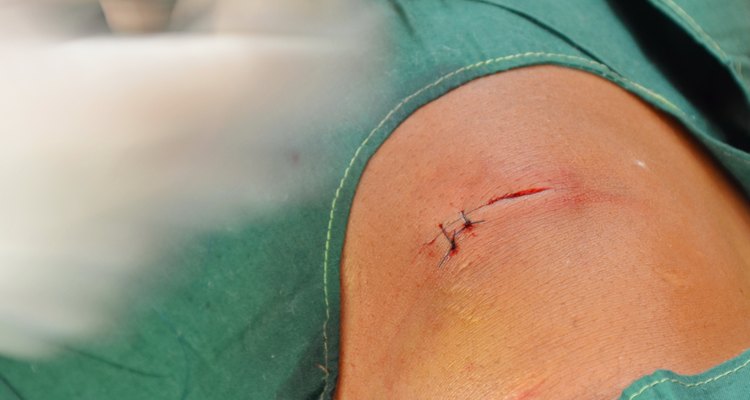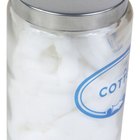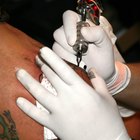
anukool/iStock/Getty Images
Suturing is a method of surgically closing a wound. The manner of suturing technique will depend upon the location, extent and nature of the wound. One suturing technique is the running suture. This method uses only one continuous piece of suturing material. The running suture requires only a knot at the beginning and end of the suturing material. This method is most frequently utilized when two pieces of tissue require proximity.
Assess the wound for complete healing prior to removal of sutures. The wound should be free from redness, discharge or other signs of infection.
Obtain a suture removal kit. A suture removal kit will contain a pair of sterilized tweezers and a pair of small scissors.
Cleanse the sutured area completely with an antiseptic solution recommended by a health care provider. This will also moisten the sutures and allow for easier removal from the skin.
Take the tweezers into your non-dominant hand and the scissors into your dominant hand.
Grasp one of the surgical knots with the tweezers. The surgical knots in a running suture will be located on either end of the wound. You will want to gently lift up on one of the knots in order to cut into the suture material past the knot.
Thread the suture back though the skin down the length of the wound, using the tweezers.You will grasp the length of thread running over the skin surface and gently pull upward allowing the suture to slide out of the skin. Continue this process until all suture material has been removed from the wound. As this is a running suture, there should not be additional knots to cut down the length of the wound.
Re-cleanse the wound with the antiseptic solution and a sterile piece of gauze.
Place a bandage over the area if any bleeding is noted after the removal of the suture. It is best to place sterile gauze over the wound and secure it to the skin with the use of surgical tape.
Related Articles

Professional Way to Clean an Eyebrow ...

How to Remove a Labret Piercing

How to Put in a Hoop Nose Ring

How to Open Pierced Ears That Have ...

How to Pierce Your Navel

How to Close Up Needle and Thread Holes ...

How Is Nipple Piercing Performed?

How to Use a Styptic Pencil

How to Remove Betadine From the Skin

Complications of Nipple Piercing

Taking Care of Gauged Ears

How to Gauge the Ears Right After the ...

How to Tighten Loose Ligaments

How to Fix an Irritated Upper Lip After ...

Types of Piercing Needles

How to Care for a Rook Piercing

How to Get Rid of a Tattoo Scab

How to Cauterize Skin Tags

How to Take Beaded Hair Extensions Out ...

How to Clean Tattoos With Rubbing ...
References
Writer Bio
In 2008 Lauren Osborne received the Doretta Dick Award for Excellence in Scholarly Writing from Stony Brook University. Osborne began writing professionally in 2010 when she wrote a nationally published statement for the March of Dimes. Osborne holds a Master of Science in midwifery from Stony Brook University.
Photo Credits
anukool/iStock/Getty Images